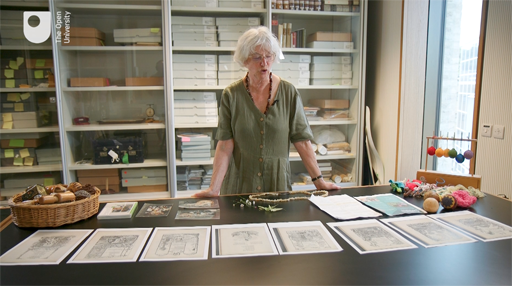2.3 ‘Mother songs’
‘Mother songs’, now often translated as ‘family songs’, were finger rhymes and songs sung to young children by a parent or carer for a host of benefits. These songs were written by Froebel and accompanied by a music score and detailed illustrations. They were based on everyday life activities that children might be involved in or observe including the cycles of nature around them. Froebel’s rationale for the importance of these songs was not only that they supported the young child’s intellectual development but that they supported a warm loving relationship developing between the child and the adult. Tina Bruce observes how, in interacting with songs and rhymes, babies ‘enthusiastically take up the intellectual life, providing they are wrapped in an atmosphere of affection and nurture’ (Bruce, 2021, p. 73). The original songs and rhymes may sound inaccessible to the twenty-first century ear but it would be incorrect to assume that their influence has disappeared from current practice.
Powell and Goouch (2015) carried out research in 2013–2014 to find out if singing remained an important part of pedagogy with young children. They worked with 29 practitioners in England, asking them about their singing practices and observing them to find out what this might look like. They concluded that ‘Friedrich Froebel’s influence on practice appears to be timeless as singing continues to be promoted as an educational activity for the nursery, and songs and finger rhymes are tools to enhance children’s learning experiences’ (Powell and Goouch, 2015, p. 2). In Tina Bruce’s book Early Childhood Practice; Froebel today (2012), Maureen Baker also illustrates how this influence pervades in the home environment as she describes how baby Sylvie has ‘positive, supportive relationships … nurtured through [the] sharing of music, songs and rhymes’ (p. 92).
Of course, these will be very different songs to those in Froebel’s day; Powell and Goouch (2015) describe how practitioners recall that they might sing as they are sweeping up or washing their hands (p. 3) and Sylvie plays with plastic ducks in the bath whilst her mother sings ‘Five little ducks to her’. These are both very different contexts to Froebel’s song about The Charcoal Burner described by Bruce (2021, p. 81). Yet the idea is the same; the young children are introduced to rhymes and songs that are meaningful to them because they are describing their experiences.
At this point you may like to watch this short video of Professor Tina Bruce describing further the importance of the Mother songs and how they link to young children’s everyday experiences.

Transcript
TINA BRUCE: And what he began to do was to develop some lovely songs that he called the "mother songs." We'd probably call them "family songs" now because actually the whole family used to sing them with the children. And he also developed wonderful things for children to play with from a very early age.
But part of his concept of unity was about not just the wider world and the people in it, but also the wider world and nature. He wanted children to engage with nature.
Now, his favourite flower was the lily. And he loved the lily because he said, in a garden, a lily will grow where it's very dark and very damp. And you don't think anything will be able to grow, but lilies can grow there.
And he said that's like children. Children can grow in dark places, where their lives are not necessarily easy. But if we can help them to grow, that is what adults need to do.
So the lily for him was like a metaphor, where you help children to grow and flourish, even if they're in a dark place. So he did a lot of work with children, who are not privileged children, who are growing up perhaps in poverty.
Now, first-hand experiences lead children to know themselves. We're going to look at that in a minute. But it also leads children to move from what's literal and real to things that are imaginary and pretend ideas.
So if I just show you some of the things about that, you see, one of the things would be picking up daisies. Children-- you know, we love to do that with little babies. From a very early age, they love to try and pick daisies and things when you sit them on the grass. And so his self-activity needed real experiences because, otherwise, the songs, the family songs, wouldn't mean anything to the children.
So you might go with your baby-- and what we now call "proprioception," having a relationship with the ground. If babies don't sit on grass, they don't discover that that's different from sitting on a gravel path or it's different from being on a brick path. Babies need to do these things when they sit. And when they crawl, they're absolutely fascinated by these things.
So, he's got lovely songs about cuddling children and hiding because babies love to do peekaboo.
This section has described how ‘Mother songs’ were an important feature of practice with young children, whether that be in parents’ interactions or those in the setting. Although this practice remains today, and is attributed to Froebel, the ways in which children access these songs and finger rhymes may have completely changed. For example, streaming music during ‘tidy up time’ in the setting, in car journeys with parents, or accessing visually songs and rhymes through video clips for a ‘sitting quietly time’ all remove the relationship with the adult, the key feature of these songs according to Froebel – and instead develops a relationship with technology.
Activity 2 Mother songs
Did the section on ‘Mother songs’ make you think of songs you share with children or perhaps even songs that were sung to you as a child. Make a list of three such songs and note why you think the children enjoy them. You can record this in your Learning journal or the text box below.
